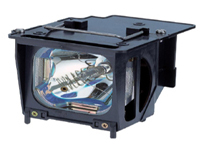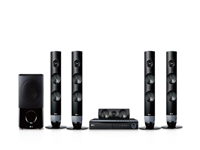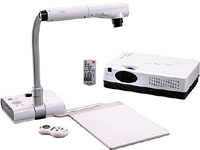What We Do ?
Our Products
Projectors Lamps

Projector lamps, also known as projector light bulbs or projector bulbs, are one of the few user replaceable projector parts. There are several different projector lamp technologies of different wattages. Be sure your projector light bulb matches the one you are replacing as each projector is designed to use a specific type of lamp and a specific wattage. Consult your user's manual for information on replacing the lamps. Lamps should be treated as hazardous waste and disposed of accordingly.
Projector lamps need to be kept in a dry, cool, dust free environment to maximize lamp life and minimize operating cost. A common trick is to leave your well-circulated fan on after use until the projector is cool. Do not obstruct airflow or you can burn out your lamp, or even worse. Lamp brightness is essential to picture quality, so it is extremely important to maintain your bulbs and refer to your projector guide to determine the lamp life expectancy. As a lamp nears its end, dimming may occur.
There two common projector lamp types: Metal Halide Lamp, and the Halogen Bulb, each with their positive and negative qualities. The Metal Halide Lamp is superior and used for medium to high-end projectors. One downfall are that these lamps lose brightness after use, where Halogen Bulb's maintain their brightness while only lasting 40 to 70 hours compared to Metal Halide at 1,000 to 2,000 hours. Some of these lamps are being advertised at 4,000 hours. Halogen Lamps are yellow compared to the Whites that make Metal Halide a superior technology.
Home Theater

A home theater or home theatre is a theater built in a home, designed to mimic (or exceed) commercial theater performance and feeling, more commonly known as a home cinema. Today, home cinema implies a real "cinema experience" at a private home.
3D Projectors

The 3D projectors category includes the latest projectors used for 3D 1080p home theater systems, and digital 3D movies. If ever there was a great story for projectors, that has to that 3D projectors may well finally catapult home theater and home entertainment projectors into the lime light, and start stealing serious marketshare from LCDTVs.
3D on a 42" LCDTV is cool, but hardly as impressive as a theater. 3D projectors filling screens typically from 92" diagonal to 130" diagonal, is a game changer. Like in a theater, you are immersed in 3D, not looking at some small 3D box.
3D projectors are now being used for home theater, for 3D gaming, in education, and for specialty business and scientific applications.
The new 3D projectors that launced in 2010, including many education and business 3D capable projectors were lower res under $1000, while 1080p for the home started from $4500. Affordable 1080p 3D projectors were a no show til CEDIA - fall of 2011. CEDIA offers new 3D projectors like Panasonic PT-AE7000U, the rumored Epson 3D projector, three Optoma's, plus more. That will fill shelfs with affordable 3D projectors, most boasting very good quality and more brightness than before.
Portable Projectors
Lorem ipsum dolor sit amet, consectetur adipiscing elit. Praesent ut erat turpis, pharetra scelerisque velit. Etiam mauris urna, dignissim a viverra eu, commodo non odio. Pellentesque feugiat, felis vel viverra tincidunt, massa est cursus felis, a accumsan augue quam quis diam. Curabitur ut porta velit.
Conference Room
Lorem ipsum dolor sit amet, consectetur adipiscing elit. Praesent ut erat turpis, pharetra scelerisque velit. Etiam mauris urna, dignissim a viverra eu, commodo non odio. Pellentesque feugiat, felis vel viverra tincidunt, massa est cursus felis, a accumsan augue quam quis diam. Curabitur ut porta velit.
Interactive Projectors

interactive projectors make any surface in your classroom interactive, allowing an immersive experience that helps teachers teach and students learn. Project onto existing projector screens or whiteboards or directly onto the wall – anywhere your instructional creativity takes you. The need for any type of special display screen is eliminated.
These projectors allow you to interact with your projected lesson plan from practically anywhere in the classroom. By using a special interactive pen, you can draw, point and click by touching the screen directly or from many feet away from the screen. This flexibility also allows teachers to interact with the entire screen no matter how large because the pen interacts from a distance or by touching the screen. Teacher height and reach are no longer barriers to the interactive workspace. Instead, you'll have incredible flexibility and total control of the classroom. Interactive projectors with DLP technology are the only solutions that allow you to interact on-screen or from a distance. It will give you newfound freedom to interact with everything you project from practically anywhere in the classroom.
Classroom Projectors

In a competitive world, you want the best technology tools in the classroom; technology that will offer superior advantages for your teachers and students. DLP projector technology has been offering this advantage for years and continues to raise the bar through innovations that expand instructional reach for teachers and lower the total cost of ownership (TCO) for schools at the same time. With Filter-free designs that require less maintenance and offer lower operating costs, DLP projectors help your school save money. Plus, unlike other technologies, DLP projectors are virtually immune to color decay (a yellowing of the image after extended periods of usage), so you will have a reliable system even after years and years of use.Today's technologically savvy students need to be engaged in a dynamic and immersive way. DLP projectors deliver interactivity and multi-dimensional curriculum to the classroom with unparalled image quality. The result: higher student involvement and higher test scores.
Effective communication
Imagine the possibilities of a classroom designed around a DLP projector system. The most complex lessons can be brought to life though integration of virtually every teaching tool under the sun with the projector system.
New teaching tools
A DLP education projector can help improve student performance by encouraging greater classroom participation to increase the retention of the content being displayed. From video game style role-playing and interactive simulations and digital imaging-based presentations, to engaging Internet excursions, students get so much more from the curriculum when it's experienced through the brilliance and clarity of a DLP projector.

